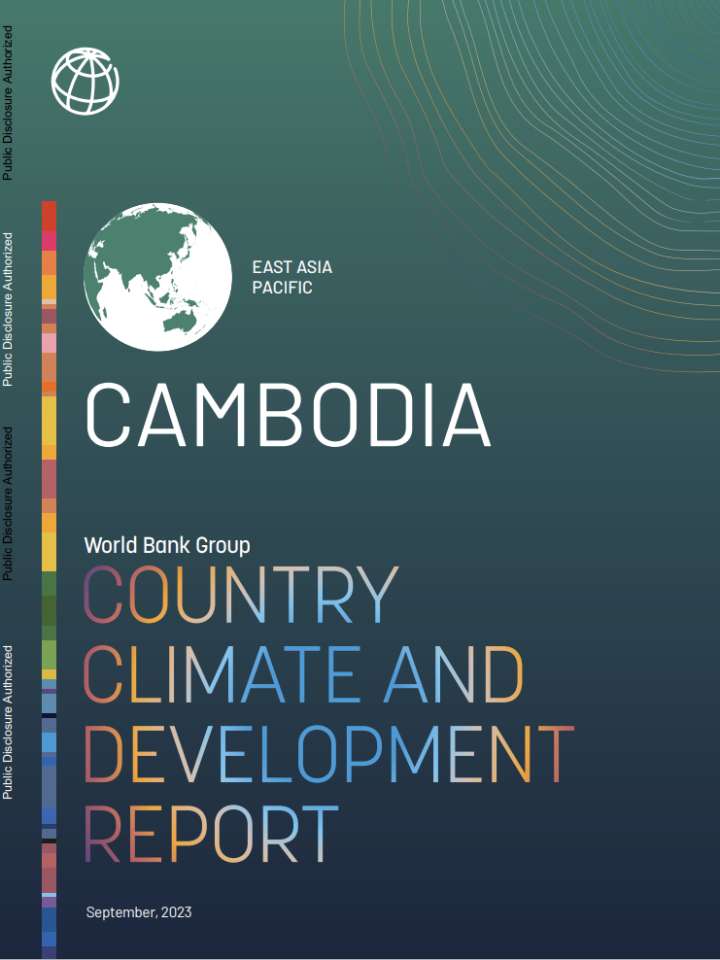Cambodia country climate and development report
The Cambodia Country Climate and Development Report (CCDR) provides analysis and recommendations on how Cambodia can achieve sustained development while responding to climate change and the low-carbon transition. Cambodia has high development aspirations, aiming to become an upper-middle-income country by 2030 and a high-income country by 2050. Achieving these goals will not be easy and will require a more inclusive, diversified, and productive economy. Climate change could amplify existing development challenges, with potentially sizable impacts on growth, trade, debt, and poverty reduction, as Cambodia faces one of the world’s highest levels of exposure to floods and extreme heat. However, building climate resilience also offers an opportunity, not only to mitigate climate risks, but also to concurrently further development outcomes, as this report finds that adaptation measures in Cambodia have large development co-benefits.
The publication's recommendations include the following:
- Develop programs and introduce incentives to modernize and expand irrigation.
- Mandate monitoring and reporting of green loan data.
- Introduce incentives and expand extension services to diversify from high-risk crops toward climate-resilient, high-value, marketable crops.
- Improve fisheries management, promote climate-resilient aquaculture, and protect critical mangrove habitats.
- Improve access to early warning systems and emergency response infrastructure.
- Manage motorization and encourage the use of much more carbon efficient modes such as walking and biking and public transport.
- Diversify with more complex, higher value-added products and value chain segments; rapid demand growth for low-carbon goods and services offers potential opportunities to do so.
- Establish a taskforce for green finance readiness.
- Deepen capital markets and further develop the green bond market to address climate change and finance growth more generally.
Explore further
